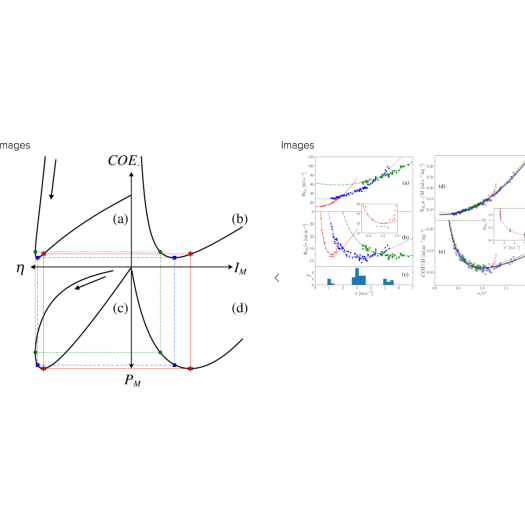Thermodynamics of Animal Locomotion

Thermodynamics of Animal locomotion

Thermodynamics of Animal locomotion
Co-écrit par Vincent Bels de l’ISYEB, vient de paraître dans Physical Review Letters,
Minimal waste production is a fundamental law for animal locomotion
Is there a unifying principle underpinning animal locomotion in its rich diversity? A thermodynamic analysis shows why and how waste minimization prevails on efficiency or power maximization when it comes to free locomotion irrespective of the available mode and gaits.
Locomotion is a hallmark of animal life. In the late 19th century Eadweard Muybridge’s invention, the zoopraxiscope, a precursor of motion picture, mesmerized crowds witnessing the beautiful complexity of biomechanics. Comparison between living and man-made machines was naturally tempting at that time, and still is. For the latter, energy conversion efficiency maximization is a must, but does this apply to animals when they freely move about? Answering this question poses a formidable challenge considering the multiform character of animal life and habitats.
Power maximization is the obvious target under stressful contexts, prey chasing or flight; but no clear principle, if any, seemed to apply to free locomotion. Introducing the energy cost of efforts, a fundamental extremal principle of the nonequilibrium thermodynamics of animal locomotion was unraveled: free locomotion entails minimization of metabolic waste production. This research contributes a significant progress in the understanding of locomotion in any environment (terrestrial, aerial, aquatic) independently of the phylogeny. Interestingly, it also sheds light on a natural principle that can drive innovative design of future man-made waste-efficient machines, and it may also feed bioinspired robotics, which in turn could advance the development of physics-based theories of life.
–-
La production minimale de déchets est une loi fondamentale pour la locomotion animale
Existe-t-il un principe fédérateur qui sous-tend la locomotion animale dans sa riche diversité? Une analyse thermodynamique montre pourquoi et comment la minimisation des déchets prévaut sur l’efficacité ou la maximisation de la puissance lorsqu’il s’agit de locomotion libre, quels que soient le mode et les allures disponibles.
La locomotion est une caractéristique de la vie animale. À la fin du XIXe siècle, l’invention d’Eadweard Muybridge, le zoopraxiscope, précurseur du cinéma, captivait les foules en voyant la belle complexité de la biomécanique. La comparaison entre les machines vivantes et artificielles était naturellement tentante à cette époque, et l’est toujours. Pour ces derniers, l’optimisation de l’efficacité de la conversion énergétique est indispensable, mais cette règle s’applique-t-elle aux animaux lorsqu’ils se déplacent librement? Répondre à cette question pose un formidable défi compte tenu du caractère multiforme de la vie animale et des habitats.
Maximaliser la puissance est une cible évidente dans des contextes stressants, la poursuite ou la fuite de proies; mais aucun principe clair, le cas échéant, ne semblait s’appliquer à la libre circulation. En introduisant le coût énergétique des efforts, un principe fondamental de la thermodynamique hors équilibre de la locomotion animale a été démêlé: la locomotion ‘libre’ implique de minimiser la production de déchets métaboliques. Cette recherche contribue à un progrès significatif dans la compréhension de la locomotion dans n’importe quel environnement (terrestre, aérien, aquatique), indépendamment de la phylogénie. Elle met également en lumière un principe naturel qui peut conduire à la conception innovante de futures machines artificielles efficaces en matière de déchets, et il peut également alimenter la robotique bioinspirée, qui à son tour pourrait faire progresser le développement de théories de la vie basées sur la physique.
Herbert, E., Ouerdane, H., Lecoeur, Ph., Bels, V., & Goupil, Ch. (2020).
Thermodynamics of Animal Locomotion. Physical Review Letters, 125(22), 228102.
https://doi.org/10.1103/PhysRevLett.125.228102